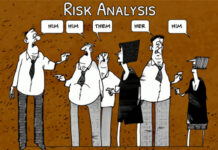On May 13, 2015, MEP. Paul De Castro – former Italian minister for agriculture – submitted a question to the European Commission on an issue that at first glance appears very technical, but has major implications for the health of consumers and the economy of a production chain anchored in the national territory. This is an additive, tartaric acid.

Naturally occurring tartaric acid
Tartaric acid is a naturally occurring substance extracted from wine lees-that is, what comes from pressing grapes-where it is present in the form of potassium salt. It has always been used in food and wine production, toothpastes, pharmaceutical industry products and other consumer products, as well as in some building materials. In the food industry, tartaric is added to a wide range of products starting with baby milk, candies, jams, and fruit juices, to which it imparts an acidic taste. In leavening agents for bread and cakes, as an antioxidant and emulsifier. In wine, to balance its acidity.
The invasion of the synthetic product: benzene from GMOs
In the last decade, however, a synthetic tartaric acid, sourced from Asia, a by-product of the chemical reaction derived from benzene by a GMO enzyme, has appeared on the market (1). As early as 1977, studies had shown the toxicity of a form of the synthetic tartaric, which tends to accumulate in the kidneys leading to nephrosis (2). And the Scientific Committee on Human Nutrition had therefore ruled out its use in food, in Europe, in 1991.
The European lag
Chemistry has since evolved, but European procedures have not kept pace with it. Indeed, state-of-the-art technologies have made it possible to reduce-but not entirely rule out-the residual of the dangerous form of synthetic tartaric. On closer inspection, the ‘Institute for Health and Consumer Protection’ (‘Physical and Chemical Exposure Unit’) had recognized that ‘the possible presence of the D isomer of tartaric acid and heavy metals makes tartaric acid L produced by biosynthesis unsuitable for food or pharmaceutical uses.’ But the albeit recent European regulations on the use of additives in food (3) and in materials intended to come into contact with them (4) do not distinguish natural tartaric acid versus synthetic, because still rely on studies dating back to an earlier era.

De Castro: EC to authorize new studies
Congressman Paolo De Castro intercepted the danger, and he therefore immediately took action. “É It is absolutely necessary and urgent that the European Commission authorize further studies intended to First evaluate the safety profile of synthetic tartaric acid and then assess whether this does not should be excluded from at least food and pharmaceutical uses,” explains the former Italian minister for agriculture at Great Italian Food Trade (www.greatitalianfoodtrade.it). He adds, “to the protection of the citizens’ health, there is also the problem of unfair competition suffered by companies producing European natural tartaric acid – justItaly is a world leader in the production of tartaric acid natural – who are forced to bear much higher production costs related to the stringent European environmental and occupational safety regulations.”
Our MEP has uncovered Pandora’s box – by the sounds of it – on the greedy speculation by large importers and processors of ingredients, which may have replaced the valuable natural tartaric acid with its synthetic copy of far greater value. Juggling the regulatory gaps, and the shortcomings of the European Commission. Which must now take measures immediate to protect both the health of consumers and processors who tend to be unaware of the technical implications and underlying dangers.
(Dario Dongo)
Notes
(1) Technically speaking, synthetic tartaric acid is derived from maleic anhydride, which in turn is obtained by oxidation of benzene or n-butane through fermentation with a modified enzyme genetically
(2) The ‘Summary of toxicological data of certain food additives’, published in the report of the 21′ Meeting of the ‘Joint FAO/WHO Expert Committee on Food Additives,’ in Geneva, April 18-27, 1977
(3) Reg. EU 1129/2011 of the European Commission, 11.11.11, ‘amending Annex II of the Regulation (EC) No. 1333/2008 of the European Parliament and of the Council by establishing a Union Directory of food additives’
(4) Reg. EU 174/2015 of the European Commission, 5.2.15, ‘amending and correcting Reg. (EU) no. 10/2011 concerning plastic materials and articles intended to come into contact with the food products’







